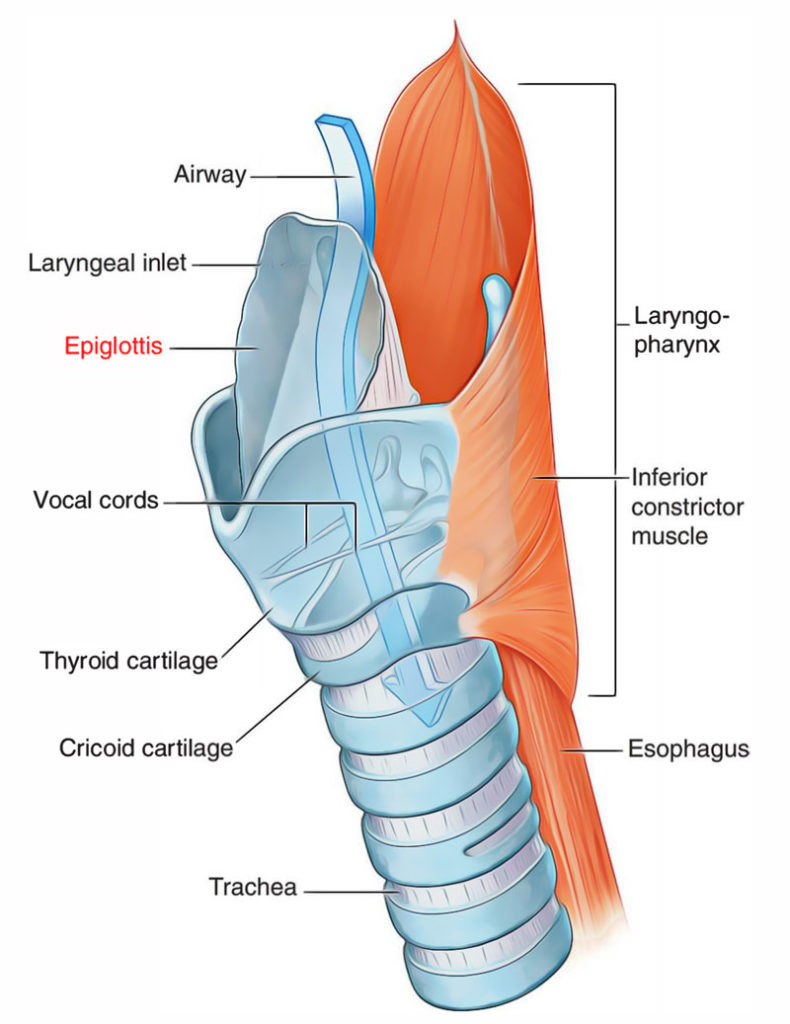The epiglottis is a leaf-shaped flexible flap of cartilage located behind the tongue at the end of the larynx. One of the main function of the epiglottis is to protect the body from chocking by sealing the windpipe during eating, so the food is inhaled accidentally.

Epiglottis
Structure
Epiglottis is a leaf like structure which extends up behind the hyoid bone and the base of the tongue. The broad upper end of the epiglottis is idle and forms the upper boundary of the laryngeal inlet, while the lower end (stalk) is sharp and is connected to the posterior surface of the angle of the thyroid by thyroepiglottic ligament.
The anterior surface of epiglottis is connected with the base of the tongue by median and lateral glossoepiglottic folds. The depression on each side of the median fold is called vallecula. The posterior surface of epiglottis provides a tubercle in its lower part.
Surfaces
The anterior surface of the epiglottis is made up of the nonkeratinized stratified squamous epithelium.
The posterior surface of the epiglottis is covered with pseudostratified columnar epithelium.
Function
- Epiglottis functions as a part of the pharynx during breathing and swallowing.
- Epiglottis is used to produces epiglottal speech sounds which is a rare sound-type used in some languages.
N.B The epiglottis is rudimentary in human beings but in macrosomatic animals it is elongated and extends beyond the soft palate in the nasopharynx.
Ossification
The epiglottis is visible around the fifth month from the fourth pharyngeal arch.
Clinical Significance
Epiglottitis
Epiglottitis is illness in which inflammation and swelling of epiglottis takes place. It is characterized as a life threatening condition. The tissues which make up the epiglottis becomes infected, swells and can block your airway. Epiglottitis requires immediate medical attention.
The most common cause of epiglottitis is bacterial infection. The most common bacteria that can cause epiglottitis Haemophilus influenzae type b, also known as Hib.
Symptoms of Epiglottitis
- Fever
- Hoarse voice.
- Difficulty breathing.
- Difficulty swallowing.
- Drooling.
- High-pitched sound when breathing in.
